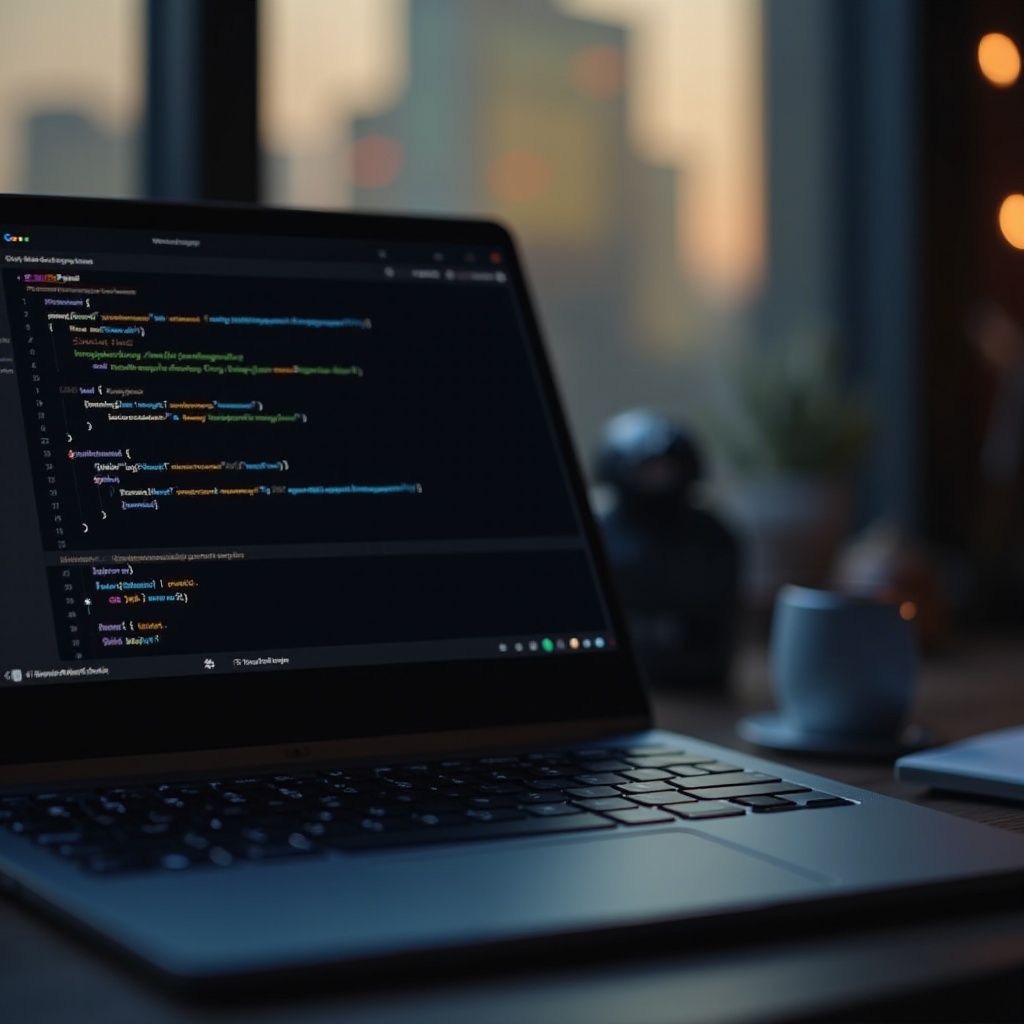Introduction
Many developers prefer using Microsoft Visual Studio Code (VS Code) due to its rich array of features and ease of use. However, when it comes to installing and running this essential coding tool on a Chromebook, many are uncertain about the process.
This guide will walk you through everything you need to know about getting Microsoft Visual Studio Code on a Chromebook, from understanding the software, preparing your Chromebook, downloading and installing the software, configuring it, and troubleshooting common issues.

Understanding Microsoft Visual Studio Code
Microsoft Visual Studio Code (VS Code) is a free, open-source code editor developed by Microsoft. It is favored by many software developers thanks to its robust support for debugging, embedded Git control, syntax highlighting, intelligent code completion, snippets, and code refactoring.
VS Code’s flexibility enables it to support a multitude of programming languages such as JavaScript, TypeScript, Python, and C#. These features make it a strong choice for anyone from beginners to advanced developers, who are looking for an efficient and productive coding environment.
Chromebooks, primarily powered by Chrome OS, were once seen merely as web-centric machines. With the advent of Linux (Beta), they have evolved to support more complex applications such as VS Code, making it possible for developers to use these lightweight, affordable devices for robust development tasks.
Preparing Your Chromebook
Before diving into the installation, it is crucial to prepare your Chromebook. This preparation involves ensuring that the system meets the requirements, enabling developer mode, and enabling Linux (Beta).
System Requirements
Make sure your Chromebook has:
- At least 4GB of RAM for smooth operation.
- Adequate storage space – a minimum of 16GB is recommended to accommodate the OS and VS Code.
- Chrome OS version 80 or above to support the Linux (Beta) feature.
- A stable internet connection.
Enabling Developer Mode
Enabling Developer Mode allows you to gain deeper system access necessary for the installation process:
- Turn off your Chromebook.
- Press Esc + Refresh + Power to turn it on and enter Recovery Mode.
- Press Ctrl + D and then Enter to turn on Developer Mode. This process may take a few minutes.
Note: Enabling Developer Mode will erase all local data, so ensure to back up your data.
Enabling Linux (Beta)
Linux (Beta) enables the installation of Linux applications such as VS Code:
- Go to Settings.
- Find the ‘Linux (Beta)’ section and click ‘Turn On.
- Follow the prompts to complete the setup.
Once you have Linux (Beta) set up, your Chromebook is ready to install Visual Studio Code.
Installing Microsoft Visual Studio Code
Now that your Chromebook is ready, follow these steps to download and install VS Code.
Downloading VS Code
- Open the Terminal from the Linux (Beta) settings.
- Update your package lists by running
sudo apt-get update. - Install wget if it’s not installed:
sudo apt-get install wget.
Installing via the Terminal
- Use wget to download the .deb file:
wget https://code.visualstudio.com/sha/download?build=stable&os=linux-deb-x64 -O vscode.deb - Install the .deb file by running:
sudo dpkg -i vscode.deb - Finalize the installation:
sudo apt-get install -f
Verifying the Installation
- Open the app launcher on your Chromebook.
- Locate the Visual Studio Code icon and click it to launch.
- If properly installed, VS Code will open and greet you with its welcome screen.
Configuring Visual Studio Code on Chromebook
After successfully installing VS Code, the next step is to configure it for optimal use.
Customizing the Interface
VS Code’s interface can be tailored to your preferences:
1. Go to Settings (gear icon) at the bottom left corner.
2. Themes: Choose from Light, Dark, or high contrast themes.
3. Font and layout settings: Adjust the text size, spacing, and editor layout.
Essential Extensions to Install
Boost your productivity by installing extensions:
1. Prettier: Code formatter to keep your code clean and readable.
2. Python: Enables Python development features.
3. Live Server: Launches a local server with live reload.
4. GitLens: Superhero functionalities for Git.
5. ESLint: Integrates ESLint JavaScript linting into VS Code.

Troubleshooting Common Issues
While installing and running VS Code on your Chromebook is relatively smooth, you might encounter some common issues.
Installation Problems
- Error messages during installation: Re-run
sudo apt-get install -fto fix broken dependencies. - VS Code does not open: Ensure Linux (Beta) is running properly. Restart it from the settings menu.
Performance Issues
- Lagging or slow performance:
- Close unnecessary applications running in the background.
- Increase available RAM for Linux (Beta) from the settings.
- Crashing issues: Check for Chrome OS updates and update Linux packages using
sudo apt-get update && sudo apt-get upgrade.

Conclusion
Installing and running Microsoft Visual Studio Code on a Chromebook is a straightforward process with the right preparation and steps. By following this guide, you’ll have VS Code running smoothly on your Chromebook in no time. Whether you’re coding in Python, JavaScript, or any other language, VS Code offers a versatile and powerful environment for all your development needs.
Frequently Asked Questions
Can you run Visual Studio Code on a Chromebook?
Yes, with recent updates to Chrome OS and support for Linux (Beta), you can install and run Visual Studio Code on a Chromebook.
What are the system requirements for installing VS Code on a Chromebook?
You’ll need a Chromebook with at least 4GB of RAM, 16GB of storage, and Chrome OS version 80 or above.
How do you fix common installation issues with VS Code on a Chromebook?
Common fixes include running `sudo apt-get install -f` to fix broken dependencies and ensuring Linux (Beta) is properly set up and running.

